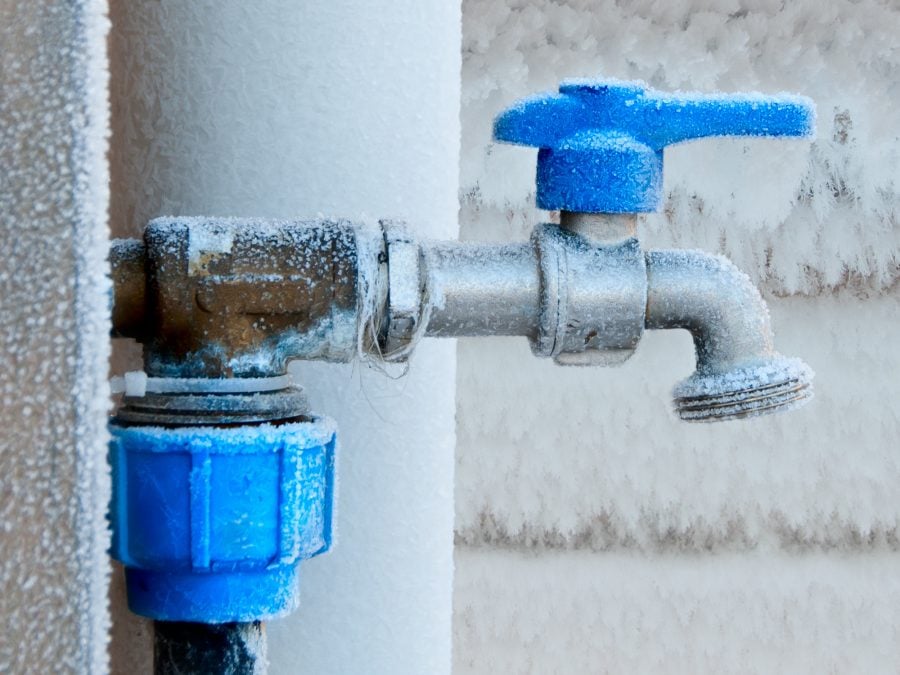Ways to Avoid Frozen Plumbing in Winter: Professional Guidance
Ways to Avoid Frozen Plumbing in Winter: Professional Guidance
Blog Article
What're your opinions regarding 6 Ways to Prevent Frozen Pipes?

Cold weather can wreak havoc on your pipes, particularly by freezing pipelines. Right here's just how to stop it from occurring and what to do if it does.
Introduction
As temperatures decline, the risk of frozen pipes boosts, possibly bring about costly repair work and water damage. Comprehending exactly how to avoid frozen pipes is vital for homeowners in chilly climates.
Prevention Tips
Insulating vulnerable pipelines
Cover pipelines in insulation sleeves or utilize heat tape to protect them from freezing temperature levels. Concentrate on pipelines in unheated or outside areas of the home.
Home heating methods
Keep indoor rooms appropriately warmed, particularly areas with pipes. Open up closet doors to permit warm air to flow around pipes under sinks.
Exactly how to identify icy pipelines
Seek decreased water flow from taps, unusual odors or sounds from pipes, and noticeable frost on revealed pipelines.
Long-Term Solutions
Structural adjustments
Think about rerouting pipelines far from outside wall surfaces or unheated locations. Add added insulation to attic rooms, basements, and crawl spaces.
Upgrading insulation
Invest in high-grade insulation for pipelines, attics, and wall surfaces. Proper insulation assists preserve regular temperatures and lowers the threat of frozen pipes.
Safeguarding Outside Plumbing
Yard tubes and exterior faucets
Disconnect and drain pipes garden hoses prior to winter season. Mount frost-proof spigots or cover exterior faucets with shielded caps.
Comprehending Icy Pipes
What triggers pipelines to freeze?
Pipes ice up when revealed to temperatures listed below 32 ° F (0 ° C) for expanded periods. As water inside the pipes freezes, it broadens, taxing the pipe walls and potentially creating them to burst.
Risks and problems
Icy pipes can bring about supply of water disturbances, building damages, and expensive repair work. Ruptured pipelines can flood homes and create comprehensive architectural damage.
Indicators of Frozen Water Lines
Identifying frozen pipelines early can stop them from breaking.
What to Do If Your Pipes Freeze
Immediate actions to take
If you presume frozen pipelines, keep taps open to relieve pressure as the ice melts. Utilize a hairdryer or towels soaked in hot water to thaw pipes gradually.
Verdict
Protecting against frozen pipelines requires positive procedures and quick responses. By recognizing the causes, indicators, and preventive measures, home owners can safeguard their plumbing throughout cold weather.
6 Proven Ways to Prevent Frozen Pipes and Protect Your Home
Disconnect and Drain Garden Hoses
Before winter arrives, start by disconnecting your garden hoses and draining any remaining water. Close the shut-off valves that supply outdoor hose bibs and leave the outdoor faucet open to allow any residual water to drain. For extra protection, consider using faucet covers throughout the colder months. It’s also important to drain water from any sprinkler supply lines following the manufacturer’s directions.
Insulate Exposed Pipes
Insulating your pipes is an effective way to prevent freezing. Pipe insulation is readily available at home improvement stores and is relatively inexpensive. Pay close attention to pipes in unheated areas such as the attic, basement, crawl spaces, or garage. Apply foam insulation generously to create a buffer against the cold. You can also wrap your pipes in heat tape or thermostat-controlled heat cables for added warmth.
Seal Air Leaks
Inspect your home for any cracks or openings that could let in cold air. Seal any holes around the piping in interior or exterior walls, as well as the sill plates where your home rests on its foundation. Additionally, make sure to keep your garage door closed unless you’re entering or exiting. Leaving it open creates a significant air leak that can lead to frozen pipes.
Allow Warm Air Circulation
During cold snaps, it’s essential to allow warm air to circulate evenly throughout your home. Leave interior doors ajar to promote better airflow. Open kitchen and bathroom cabinets to help distribute heat consistently around the rooms. If you have small children or pets, be sure to remove any household chemicals or potentially harmful cleaners from open cabinets for safety.
Let Faucets Drip
A small trickle of water can make a big difference in preventing ice formation inside your pipes. When temperatures drop significantly, start a drip of water from all faucets served by exposed pipes. This continuous flow helps prevent the water from freezing. Additionally, running a few faucets slightly can relieve pressure inside the pipes, reducing the chances of a rupture if the water inside does freeze.
https://choateshvac.com/6-proven-ways-to-prevent-frozen-pipes-and-protect-your-home/

Do you like more info about Helpful Tips to Prevent Frozen Pipes this Winter? Write a remark below. We'd be pleased to hear your responses about this content. In hopes to see you back again in the future. Those who enjoyed our post kindly be sure to share it. Thanks for going through it.
Get A Quote Report this page